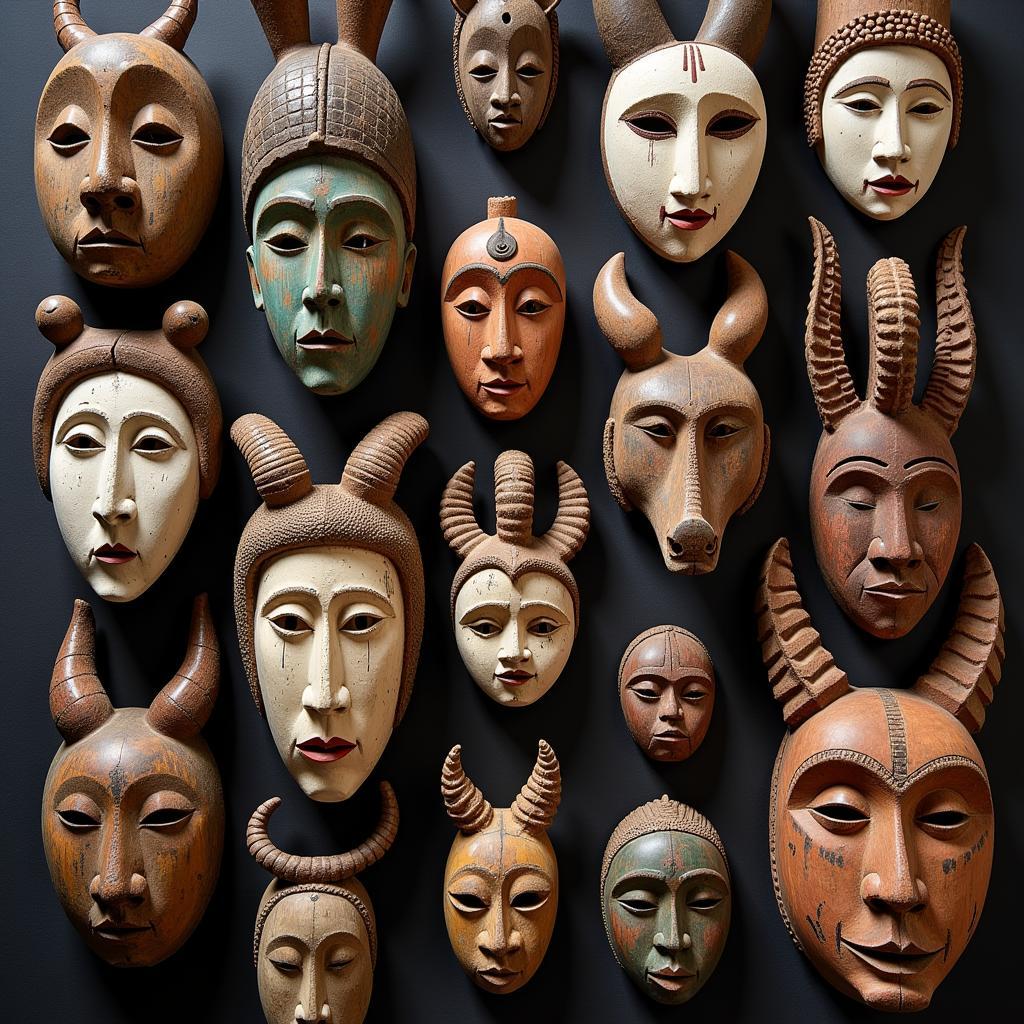The Majestic African Buffalo: A Botswana Safari Icon
The African buffalo, a powerful symbol of the wild, roams the vast landscapes of Botswana in impressive herds. These magnificent creatures are a key part of the “Big Five” and are a sought-after sight for those embarking on an African Buffalo Botswana safari.
The African Buffalo: An Overview
Known scientifically as Syncerus caffer, the African buffalo is one of the largest bovids in Africa. Males are imposing figures, reaching up to 1.7 meters tall and weighing up to 900 kilograms. They are easily recognizable by their thick horns, which form a distinctive “boss” over their heads.
Why African Buffalo Thrive in Botswana
Botswana, with its diverse ecosystems, provides an ideal habitat for the African buffalo. The Okavango Delta, a sprawling inland delta, is a particularly important stronghold. This unique environment, with its mosaic of waterways, floodplains, and islands, offers abundant grazing and water sources, crucial for supporting large buffalo herds.
The Importance of the “Boss”
The African buffalo’s horns are more than just impressive headgear. The thick boss, formed by the fused base of the horns, serves as a powerful shield, protecting their skulls during fights. Males use their horns to establish dominance within the herd and to defend themselves and their young from predators.
The Social Dynamics of African Buffalo Herds
African buffalo are highly social animals, living in herds that can range in size from a few dozen to several hundred individuals. These herds typically consist of females and their young, led by an older, experienced matriarch. Mature males often form bachelor groups or live solitary lives, joining the herds during the breeding season.
The Role of Vocalizations in Buffalo Communication
Communication is key to maintaining social cohesion within a buffalo herd. They use a variety of grunts, snorts, and bellows to communicate with each other, signaling danger, maintaining contact, or expressing aggression.
African Buffalo and the Ecosystem Balance
As grazers, African buffalo play a crucial role in shaping their environment. Their grazing habits help to control vegetation growth, preventing bush encroachment and maintaining the balance of the savanna ecosystem.
Threats to African Buffalo in Botswana
While Botswana boasts a healthy buffalo population, these animals face several threats. Habitat loss due to human encroachment, competition for resources with livestock, and disease outbreaks, such as foot-and-mouth disease, pose ongoing challenges to their survival.
“Botswana has made significant strides in conserving its wildlife, including the African buffalo,” states Dr. Mothusi Kgomotso, a wildlife biologist with years of experience studying buffalo in the region. “However, continued efforts are needed to mitigate these threats and ensure the long-term well-being of this iconic species.”
Experiencing the African Buffalo on Safari
An African buffalo Botswana safari offers an unparalleled opportunity to witness these magnificent creatures in their natural habitat. Whether you’re exploring the waterways of the Okavango Delta or traversing the savanna plains of Chobe National Park, encountering a herd of African buffalo is an experience that will stay with you long after you leave.
Tips for Observing African Buffalo Safely:
- Maintain a safe distance: African buffalo are powerful animals and can be unpredictable, especially when threatened.
- Listen to your guide: Experienced safari guides understand buffalo behavior and can ensure your safety.
- Be patient: Observing wildlife requires patience. Allow the animals to acclimate to your presence.
Conclusion
The African buffalo, with its imposing presence and vital role in the ecosystem, is an integral part of Botswana’s natural heritage. By understanding and respecting these creatures, we can contribute to their conservation and ensure that future generations have the opportunity to experience the thrill of encountering the “Black Death” on an African buffalo Botswana safari.
Remember, respecting wildlife and their environment is paramount to a safe and rewarding safari experience.
FAQs about African Buffalo in Botswana
1. What is the best time of year to see African buffalo in Botswana?
The dry season (May to October) is generally considered the best time for wildlife viewing in Botswana, including African buffalo. During this time, water sources become more concentrated, making it easier to spot animals.
2. Are African buffalo dangerous?
Yes, African buffalo are considered one of the most dangerous animals in Africa. They are known for their unpredictable nature and can charge with surprising speed and power. It’s crucial to maintain a safe distance and always follow your guide’s instructions.
3. What do African buffalo eat?
African buffalo are herbivores, meaning they eat plants. Their diet consists primarily of grasses.
4. How long do African buffalo live?
The average lifespan of an African buffalo in the wild is around 15-20 years.
5. Where can I see African buffalo in Botswana?
Some of the best places to see African buffalo in Botswana include Chobe National Park, the Okavango Delta, and Moremi Game Reserve.
For more information on African wildlife and safari adventures, explore these related articles:
Need help planning your dream African buffalo Botswana safari? Contact us!
Phone: +255768904061
Email: kaka.mag@gmail.com
Address: Mbarali DC Mawindi, Kangaga, Tanzania.
Our dedicated team is available 24/7 to assist you with all your safari needs!




